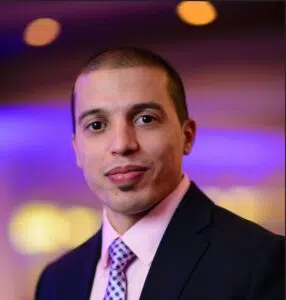Key Points
- Introduction to Conference Call Translation Challenges: Overview of the growing need for conference call translation and the complexities involved.
- Challenges in Conference Call Translation: Discuss language barriers, technical issues, cultural nuances, and time constraints.
- Solutions to Overcome Challenges: Explore the role of advanced technology, professional interpreters, preparation, and clear communication.
- Best Practices for Successful Conference Call Translation: Recommendations for using headsets, designated interpreter channels, encouraging engagement, and follow-up.
- Case Studies or Examples: Real-world examples illustrating successful conference call translation.
- Conclusion: Recap of key challenges, solutions, and the importance of effective conference call translation.
- Call to Action: Encourage readers to contact “Translation Excellence” for expert translation services.
Table of Contents
Introduction
In today’s interconnected world, global businesses rely heavily on conference calls to facilitate communication among team members, clients, and partners spread across different countries and time zones. While conference calls offer many benefits, they also present unique challenges, particularly when it comes to translation. In this blog, we’ll delve into the challenges faced in conference call translation and explore effective solutions to overcome them.
Challenges in Conference Call Translation
Here are some challenges: overcoming language barriers with real-time interpretation, ensuring smooth translation despite technical glitches, and capturing cultural nuances within tight time constraints.

Language Barriers
Conference calls often involve participants speaking different languages, making real-time interpretation essential. However, navigating multiple languages simultaneously can be incredibly challenging for interpreters, leading to potential misunderstandings and communication breakdowns.
Technical Issues
Technical glitches such as poor audio quality, connectivity problems, and compatibility issues with translation software or devices can disrupt the flow of communication during conference calls. These issues can impede the effectiveness of translation and frustrate participants.
Cultural Nuances
Effective translation goes beyond mere language proficiency; it requires an understanding of cultural nuances and context. Misinterpreting cultural cues or expressions can lead to misunderstandings and hinder effective communication.
Time Constraints
Conference calls often adhere to tight schedules, leaving little room for extended discussions or clarification of points. This time pressure can exacerbate the challenges of translation, as interpreters must work quickly to convey messages accurately.
Solutions to Overcome Challenges
Here are some solutions: utilizing advanced translation technology, leveraging professional interpreters, and prioritizing preparation, planning, and clear communication.
Advanced Technology
Investing in advanced translation technology, such as AI-powered language translation software and high-quality interpretation equipment, can significantly improve the accuracy and efficiency of conference call translation. These tools help overcome technical limitations and enhance the overall experience for participants.
Professional Interpreters
Hiring skilled and experienced interpreters who specialize in conference call translation is crucial. Professional interpreters possess the linguistic expertise, cultural competency, and rapid processing skills necessary to navigate complex conversations and ensure accurate interpretation.
Preparation and Planning
Thorough preparation and planning before conference calls are essential for successful translation. This includes conducting technical checks, providing interpreters with relevant materials in advance, and briefing all participants on the expectations and protocols for translation.
Clear Communication
Clear and effective communication among all participants is key to successful conference call translation. Setting clear expectations, providing context for discussions, and encouraging active engagement can help minimize misunderstandings and facilitate smoother communication.
Best Practices for Successful Conference Call Translation
Here are some best practices: utilize high-quality headsets, designate interpreter channels, encourage active participation, and gather feedback for continuous improvement.
Use of Headsets
Encourage participants to use high-quality headsets during conference calls to improve audio clarity and reduce background noise. Headsets help minimize distractions and enhance the overall quality of interpretation.
Designated Interpreter Channels
Set up designated interpreter channels or language channels to streamline communication and avoid confusion. This ensures that interpreters can focus on their respective languages without interference from other conversations.
Engagement and Interaction
Encourage active engagement and interaction among participants to enhance understanding and facilitate effective communication. Encouraging questions, clarifications, and feedback can help bridge language and cultural barriers.
Follow-Up and Feedback
Following up after conference calls is essential for continuous improvement. Gather feedback from participants, including both speakers and interpreters, to identify areas for improvement and implement necessary changes for future calls.
Conclusion
Conference call translation presents various challenges, including language barriers, technical issues, cultural nuances, and time constraints. However, by leveraging advanced technology, hiring professional interpreters, thorough preparation, and clear communication, these challenges can be overcome. Implementing best practices such as using headsets, designated interpreter channels, encouraging engagement, and follow-up can further enhance the effectiveness of conference call translation. As businesses continue to operate on a global scale, effective conference call translation remains essential for facilitating communication and driving success.
Call to Action
Ready to ensure seamless communication in your next conference call? Contact Translation Excellence today for expert translation services. Our team of professional interpreters and advanced technology solutions will help you overcome language barriers and achieve your communication goals with confidence.






